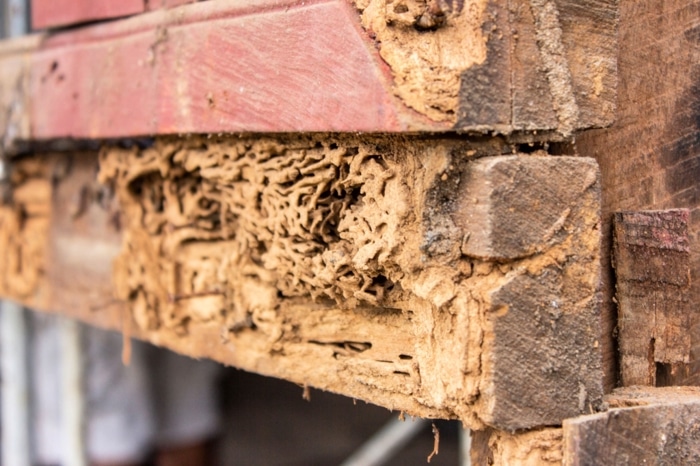Cleanliness plays a crucial role in ensuring tenant satisfaction and maintaining or even increasing the value of your properties. Imagine walking into a building with dirty floors, dusty corners, and grimy windows. Not the best first impression, right? That’s where a property management cleaning checklist comes into play. It helps keep everything on track, making sure every nook and cranny is spotless.
Understanding the Property Management Cleaning Checklist
A property management cleaning checklist is a tool that outlines all the cleaning tasks that need to be completed regularly. It’s not just a simple to-do list; it’s a structured guide that helps property managers maintain a high standard of cleanliness across all areas of their properties. This checklist includes tasks that need to be done daily, weekly, monthly, and even seasonally. It’s a comprehensive plan to ensure that nothing gets overlooked. Having a cleaning checklist means everyone knows what needs to be done, when it needs to be done, and who is responsible for doing it. This helps avoid any confusion or missed tasks and ensures that the property remains in top condition at all times.
When creating a checklist, it’s essential to include all the critical areas that require regular cleaning. This includes common areas like lobbies, hallways, and laundry rooms, as well as individual units, which might need more personalized attention. You should also include exterior areas like parking lots, gardens, and walkways. Having a detailed checklist ensures that every part of the property is given the attention it needs, reducing the likelihood of complaints from tenants and visitors alike.

No More Resident Complaints.
Benefits of a Cleaning Checklist
One of the biggest benefits of using a cleaning checklist is the streamlining of operations. A checklist helps organize and manage cleaning tasks efficiently. With a checklist, property managers can easily see what tasks need to be done and assign them to the appropriate staff members. This makes it easier to keep track of what has been completed and what still needs attention. This kind of organization can save time and reduce the stress of trying to remember everything that needs to be done.
Another significant advantage is enhancing tenant satisfaction. When tenants see that the property is well-maintained and clean, they are more likely to be satisfied with their living environment. This can lead to better tenant retention rates, as people are more likely to renew their leases in a clean and well-kept property. Satisfied tenants also mean fewer complaints and less time spent addressing issues that could have been avoided with regular cleaning.
Finally, regular cleaning as part of property maintenance checklist can improve property value. A well-maintained property is more attractive to potential tenants and buyers, increasing its market value. Clean properties also tend to have fewer repair issues since regular maintenance can prevent small problems from becoming big ones. This proactive approach not only helps keep tenants happy but also protects the investment that property owners have made in their properties. Implementing a cleaning checklist is a win-win situation for property managers, tenants, and owners alike.
Key Elements of a Rental Property Cleaning Checklist
A rental property cleaning checklist is a vital tool in ensuring every area of the property is cleaned consistently and thoroughly. For the inside of a property, it’s essential to focus on high-traffic areas like kitchens, bathrooms, and living spaces.
In the kitchen, attention should be given to cleaning appliances, wiping down countertops, and scrubbing sinks. Regular cleaning of these areas prevents the buildup of grime and bacteria, ensuring a healthy environment for tenants.
In the bathroom, it’s important to thoroughly clean toilets, showers, and sinks. These areas are prone to germs and mold if not cleaned regularly, so consistent maintenance is crucial.
Living areas require dusting, vacuuming, and window cleaning to keep them fresh and inviting. Dust can accumulate quickly, leading to allergies and an unpleasant living environment. Windows should be cleaned to allow natural light to brighten up the rooms and enhance the property’s overall appearance.
For exterior cleaning tasks, it’s important to maintain the outside of the property as well. Regular lawn care, such as mowing the grass and trimming bushes, keeps the property looking tidy and well-kept. Walkways should be swept and cleared of debris to prevent accidents and maintain curb appeal. The building exterior, including walls and windows, should be cleaned periodically to remove dirt and stains that can detract from the property’s appearance.
Don’t forget about specialized cleaning tasks that need to be done less frequently but are still important. For example, gutters should be cleaned seasonally to prevent water damage, and snow should be removed promptly in winter to ensure safe access to the property.
How to Manage a Cleaning Schedule
Creating and sticking to a cleaning schedule is essential for property managers. A well-planned cleaning schedule helps organize tasks and ensures they are completed on time. A good schedule should include daily, weekly, monthly, and seasonal tasks to cover all aspects of property maintenance.
For daily tasks, focus on high-traffic areas like lobbies and common rooms. Keeping these areas clean every day helps maintain a welcoming environment for tenants and visitors.
Weekly tasks might include vacuuming hallways, cleaning windows, and checking the condition of common areas. This level of cleaning ensures that areas that might not get daily attention are still maintained regularly.
Monthly tasks can involve more detailed cleaning, such as deep-cleaning carpets or checking and maintaining HVAC systems. These tasks help address dirt and wear that accumulate over time, keeping the property in top condition.
Seasonal tasks are essential for preparing the property for changes in weather. In the fall, gutters should be cleaned to prevent blockages from falling leaves, while in winter, snow removal should be prioritized to keep walkways safe. Spring is a good time for a thorough cleaning of the entire property, and summer might involve additional maintenance of outdoor areas.
Assigning responsibilities is crucial to the success of a cleaning schedule. Property managers should clearly define who is responsible for each task and ensure they have the tools and training they need to complete their work effectively. This might involve hiring cleaning staff or working with contractors for specialized tasks.
Implementing Property Management Cleaning Procedures
For property management cleaning procedures to be effective, staff must be well-trained and aware of their responsibilities. Proper training ensures that cleaning tasks are performed to a high standard and in a consistent manner. Training should cover cleaning techniques, safety protocols, and the use of cleaning equipment and products.
Using technology can make managing cleaning tasks more efficient. There are many apps and software available that help track tasks, assign responsibilities, and schedule maintenance. These tools can also provide reminders for upcoming tasks and generate reports to track progress and identify areas that might need more attention.
Implementing these procedures helps maintain a clean and well-organized property, which is essential for attracting and retaining tenants. A clean property reflects positively on the management and provides a pleasant living environment for tenants. It also helps protect the property’s value by preventing issues like mold growth and pest infestations that can arise from neglect.
Challenges in Property Maintenance Cleaning
Even with a solid cleaning checklist, property managers can face several challenges. One common obstacle is getting tenants to cooperate. Tenants might not always follow guidelines for keeping their spaces tidy, which can make cleaning common areas difficult. Educating tenants on the importance of cleanliness and having clear rules can help encourage cooperation. Sending reminders or having friendly conversations about maintaining cleanliness can make a big difference.
Budget constraints can also be a challenge. Cleaning and maintenance require time and resources, and property managers might have limited budgets to work with. It’s essential to prioritize tasks and focus on what needs immediate attention. Sometimes, investing in quality cleaning products and equipment can save money in the long run by improving efficiency and results.
Another challenge is dealing with unexpected messes or maintenance issues. Leaks, spills, and damages can happen without warning, requiring immediate attention. Having a flexible schedule and an emergency cleaning plan can help property managers handle these situations quickly and effectively.
Cleaning Tasks for Property Managers
Property managers play a vital role in overseeing cleaning and maintenance. Their job is to ensure that the property remains in good condition and that all cleaning tasks are completed efficiently. They need to coordinate between tenants, cleaning staff, and contractors to keep everything running smoothly.
One of their key responsibilities is ensuring consistency and quality in cleaning. This means regularly inspecting areas to ensure they meet cleanliness standards and addressing any issues promptly. Property managers should also gather feedback from tenants to identify areas for improvement and make necessary adjustments to the cleaning plan.
To keep everything consistent, property managers might conduct regular walkthroughs or inspections. These help catch any issues before they become bigger problems. When tenants see that management is committed to maintaining the property, it builds trust and confidence.
Remember, a well-maintained property not only keeps tenants happy but also protects and enhances the value of the investment. It’s all about creating a welcoming and comfortable environment that tenants want to call home.







